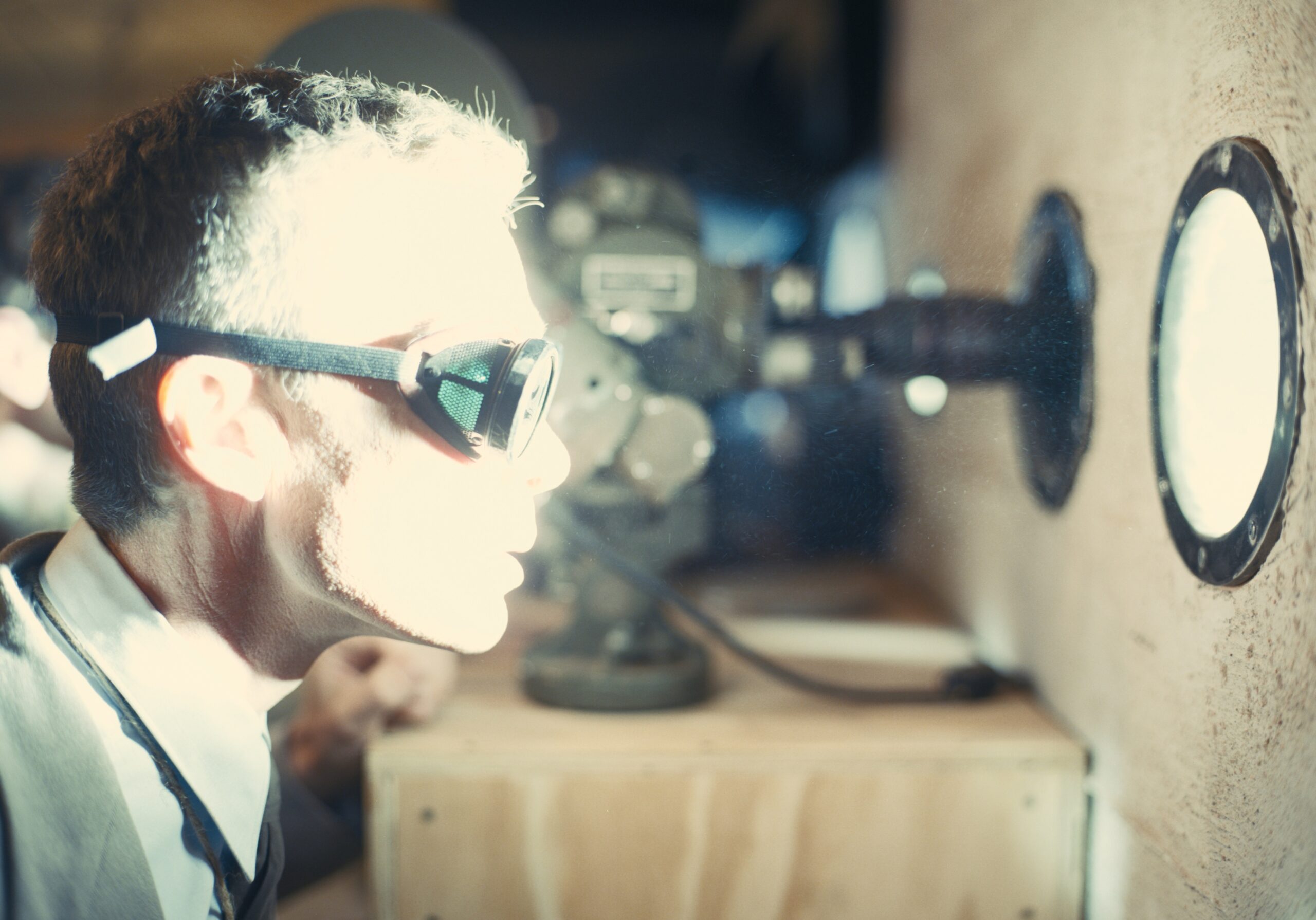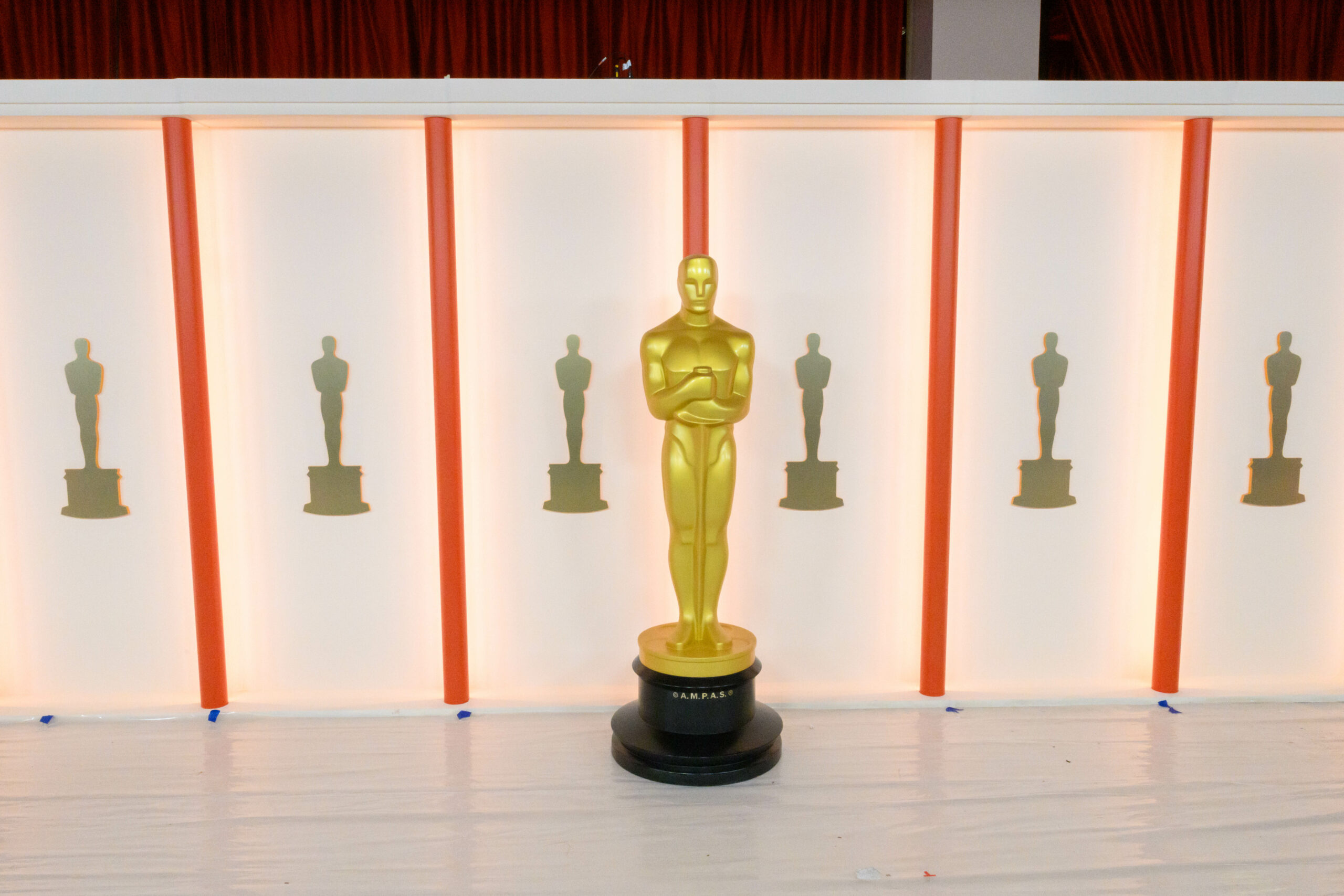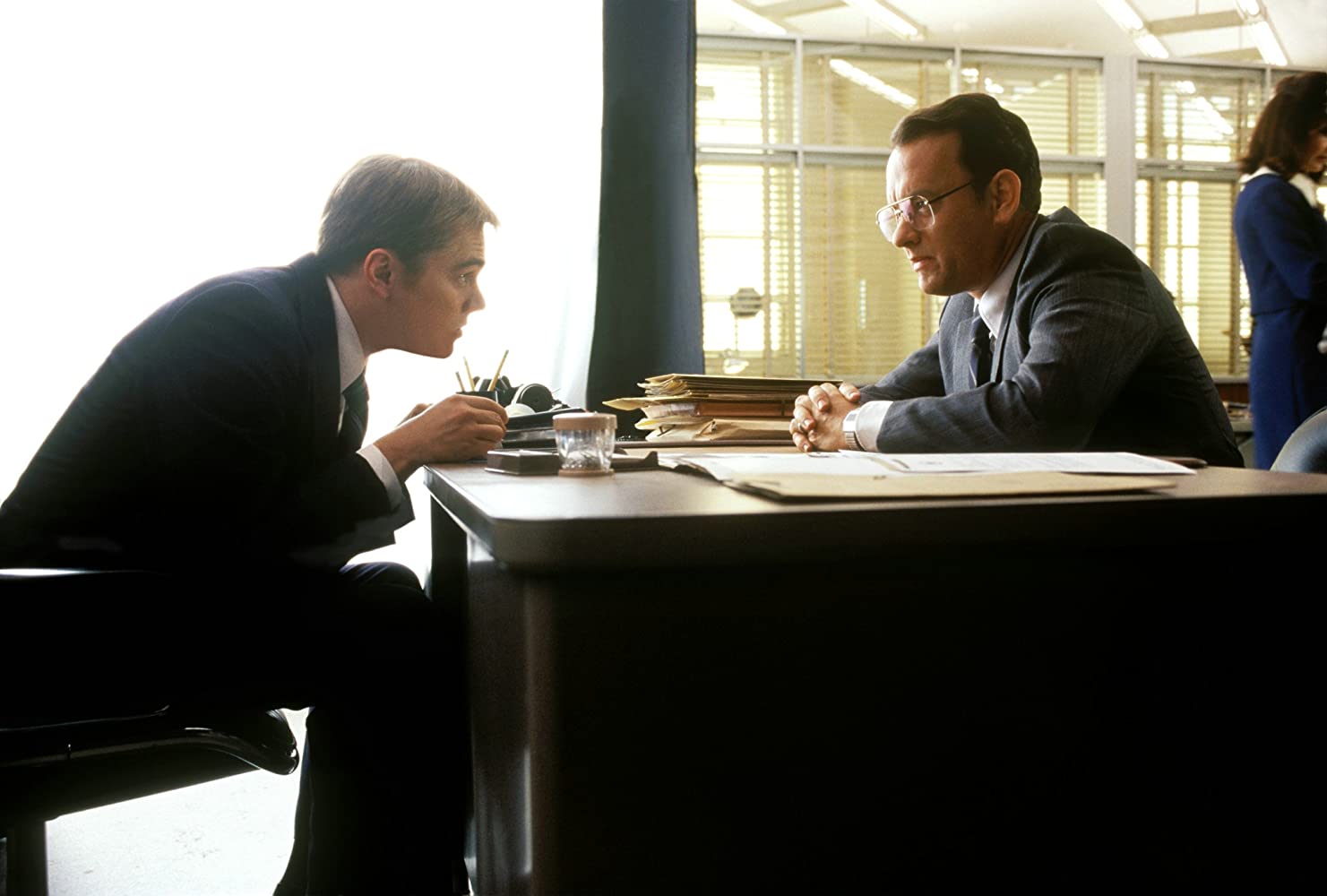
Christopher Nolan’s epic masterpiece, Oppenheimer, is now available to bring home on 4K Ultra HD, Blu-ray, DVD, and Digital.
At long last, audiences can finally bring the film home. You can place it next to Barbie on the shelf if you’re so inclined. Why not? The theatrical releases may have been at the same time but the home video releases are a few weeks apart. In any event, Oppenheimer is a must-own for anyone’s collection. Knowing Christopher Nolan, there’s no streaming guarantee.
What follows is my original review from the theatrical release:
Christopher Nolan has done it again with Oppenheimer as the J. Robert Oppenheimer biopic is another epic masterpiece.
Don’t let the 3-hour run time fool you because this one earns every minute of it. I left the theater once and that was only so I could refill a drink. At no point did this film ever feel slow because it had my attention for every single minute. It’s a film that must be experienced on the biggest screen possible!
Nolan draws on Kai Bird and the late Martin J. Sherwin’s Pulitzer Prize-winning biography, American Prometheus: The Triumph and Tragedy of J. Robert Oppenheimer, for the basis of the script. He certainly does the research here. Overall, it’s a full team effort. Nolan grounds the story in two hearings while flashing back to earlier parts in J. Robert Oppenheimer’s (Cillian Murphy) life. The first is what we now know to be a sham hearing over his security clearance. The second is Lewis Strauss’s (Robert Downey Jr.) Senate nomination hearing for his Commerce Secretary appointment. While the nomination hearings unleashes the truth about the sham hearing, it was too little and too late. Thankfully, Presidents John F. Kennedy and Lyndon B. Johnson would undo some of the damage by awarding him with the Enrico Fermi Award.
Oppenheimer and Strauss’s background are quite the compare and contrast. Both come from Jewish backgrounds although Oppenheimer was less religious. It’s possible that this was a factor in their strained relationship. Speaking of Judaism, it’s nice to see so many Jewish actors portraying Jews on screen. Many Jewish scientists, including those who escaped the Nazis, were a part of the Manhattan Project. Some, like Isador Isaac Rabi (David Krumholtz), would only serve as consultants and be in attendance for the Trinity test. When he first met Oppenheimer in the 1920s, Rabi used Yiddish, which Oppenheimer surprisingly didn’t understand. The Jewishness of so many scientists is not underplayed in this film. It’s one of the things that drives them in finishing their job.
They touch on a few major sites playing a role in the Manhattan Project:
- Los Alamos Laboratory in New Mexico
- Clinton Engineer Works (Manhattan District HQ) in Oak Ridge, Tennessee
- Hanford Site (Site W) in Washington
- University of California, Berkeley (Radiation Laboratory)
- University of Chicago (Metallurgical Laboratory)
If not for antisemitism, it’s possible that the Manhattan Project would have never been necessary. After learning that Germany had a team in place to develop the German nuclear weapon project, the plan was to beat the Nazis to the punch. As we all know, Hitler took the cowardly way out in committing suicide in 1945 and there was no need to drop a bomb in Europe. There was still fighting going on between the US and Japan on the Pacific front. The decision would ultimately be President Harry S. Truman’s (Gary Oldman) to make. As such, the US ended up dropping a pair of atomic bombs on Hiroshima and Nagasaki to end the war with Japan.

Wisely, Nolan never shows us the U.S. atomic bombs dropping on Japan. That’s not to say we don’t get something of an impact with Oppenheimer witnessing visions or having nightmares. The only bombing we see is the Trinity test in New Mexico. Even when they did the Trinity test, the idea of burning the atmosphere remained a possibility. It’s one thing to come up with a theory but it’s another thing to test a theory and see the results. In any event, we’re still dealing with the ramifications today amid a daily fear of someone pressing a button and launching the world into a nuclear world war.
Seeing the Trinity test and its mushroom cloud play out on screen is why Nolan, working with cinematographer Hoyte van Hoytema, opts for IMAX 65mm and 65mm large-format film and also films a number of sections in IMAX black and white analogue photography. It may be easy to think that the explosion is CGI but it’s not. Nolan always goes for practicality–Scott Fisher and Andrew Jackson are probably on their way to another Oscar for visual effects. We’ll never know how they achieved the recreation on screen because Nolan films typically require the same level of secrecy as the Manhattan Project.
The film runs three hours long and while Bird and Sherwin’s book forms the basis, Nolan picks and choose which parts to put on screen. We don’t see the scientist’s childhood and barely even see much of his time at Cambridge, let alone Germany. In grounding the film through hearings in both 1954 (color) and 1959 (black and white), Nolan once again tells a story that is non-linear and I would not expect anything different. Regarding dialogue, score, and sound effects, this is one of those better efforts although there are times where the score/sound effects is clearly louder than the dialogue. What I will say about Ludwig Göransson’s score is that the Oscar-winning composer brings his A game with the violin being the star. Major characters and relationships get their own themes. It can be haunting at times while also presenting doom through music.

Much like Dunkirk took audiences right back to the beach, Nolan does the same thing here with the Los Alamos Laboratory. They build exteriors at Ghost Ranch in New Mexico but it’s the real deal for the interiors, including the Oppenheimer home. Because White Sands Proving Ground is still an active military base, they film the Trinity test in Belen, New Mexico.
If Oppenheimer had his way, the laboratory would have been shut down and given back to the Native Americans. People in the government thought differently, including General Leslie “Dick” Groves, Jr. (Matt Damon) and Atomic Energy Commissioner Lewis Strauss. It speaks to how Oppenheimer’s views evolved on nuclear policy and why some turned against him. In terms of assembling the brilliant minds, Nolan wisely does not put composites into the film. It would have been wrong and serve an injustice in telling the narrative at hand.
Once a scientist puts something into the world, there’s no putting it back in the box. This is an all too prescient reminder as the biopic comes amid a debate about AI and regulating it. It’s not lost on me that the film is being released during the WGA and SAG-AFTRA strike. While it’s not necessarily about the use of AI, one can see how J. Robert Oppenheimer’s evolving views on the atomic bomb can be representative of the same discussion. It’s a discussion that’s not lost on writer-director Christopher Nolan, who brought it up during a recent Q&A screening in New York.
“The rise of companies in the last 15 years bandying words like algorithm — not knowing what they mean in any kind of meaningful, mathematical sense — these guys don’t know what an algorithm is. People in my business talking about it, they just don’t want to take responsibility for whatever that algorithm does. Applied to AI, that’s a terrifying possibility. Terrifying. Not least because, AI systems will go into defensive infrastructure ultimately. They’ll be in charge of nuclear weapons. To say that that is a separate entity from the person wielding, programming, putting that AI to use, then we’re doomed. It has to be about accountability. We have to hold people accountable for what they do with the tools that they have.”
When we look at a film like Oppenheimer, responsibility is a word that is not taken lightly. A lot of people are joking about the whole double-feature but the films couldn’t be more different. There’s something to learn from J. Robert Oppenheimer’s rise and tragic fall. It certainly didn’t help that the 1940s and 1950s brought about the worst witch hunt in American history with McCarthyism and the Red Scare. The scientist had previous relationships with members of the Communist Party. He didn’t see eye to eye with Lewis Strauss and it brought about his downfall. The film doesn’t mention it but the sham hearing was vacated back in 2022. It’s mentioned in To End All War so I don’t know why there’s not a brief thing on the screen at the end.
Nolan on AI having its Oppenheimer moment:
“When I talk to the leading researchers in the field of AI right now, for example, they literally refer to this — right now — as their Oppenheimer moment. They’re looking to history to say, ‘What are the responsibilities for scientists developing new technologies that may have unintended consequences?’”
Oppenheimer isn’t just an epic masterpiece but one of the most important films of the year and earns every minute of its 3-hour run time.
Bonus Features
- THE STORY OF OUR TIME: THE MAKING OF OPPENHEIMER*
- NOW I AM BECOME DEATH – The cast, crew and producers join Christopher Nolan in sharing the personal stories that made them passionate about the project’s ambitious design for bridging multiple genres.
- THE LUMINARIES – OPPENHEIMER’s all-star cast discusses how they synthesize the script’s dramatic narrative with the real lives of historical figures to embody their complex characters.
- THE MANHATTAN PROJECT – To visualize Oppenheimer’s ability to see different dimensions and to recreate the historic Trinity test, filmmakers developed unique techniques to craft stunning effects without using CGI.
- THE DEVIL OF DETAILS – A look at how production designer Ruth De Jong and team recreated the entire town of Los Alamos with period-accurate props, spectacular sets and painstaking attention to authenticity.
- WALKING A MILE – Costume and makeup craftspeople populate OPPENHEIMER’s immersive environments with iconic figures by utilizing thousands of pieces of clothing and cutting-edge prosthetic applications.
- CAN YOU HEAR MUSIC? – Working closely with Christopher Nolan, Ludwig Göransson composes a deeply personal, historically expansive score ranging from the organic to the alien to accompany the visual landscape.
- WE CAN PERFORM THIS MIRACLE – Christopher Nolan’s closest collaborators demonstrate how his artistic vision creates camaraderie that drives his talented crew to continue breaking new ground in filmmaking.
- TRAILERS
- INNOVATIONS IN FILM: 65MM BLACK-AND-WHITE FILM IN OPPENHEIMER – FotoKem opens the door to its film labs, where new technologies are invented for using color and black & white 65mm film to visualize OPPENHEIMER’s dual timelines while pushing the format further forward.
- MEET THE PRESS Q&A PANEL: OPPENHEIMER – Chuck Todd moderates a conversation where Christopher Nolan, author Kai Bird, and physicists Dr. Kip Thorne, Dr. Thom Mason and Dr. Carlo Rovelli reflect on the fascinating science and doomsday concerns OPPENHEIMER illustrates onscreen.
- TO END ALL WAR: OPPENHEIMER & THE ATOMIC BOMB – Explore how one man’s relentless drive and invention of the atomic bomb changed the nature of war forever, led to the deaths of hundreds of thousands of people and unleashed mass hysteria.
*Also available on participating Digital platforms
DIRECTOR/SCREENWRITER: Christopher Nolan
CAST: Cillian Murphy, Emily Blunt, Matt Damon, Robert Downey, Jr., Florence Pugh, Josh Hartnett, Casey Affleck, with Rami Malek and Kenneth Branagh, Benny Safdie, Jason Clarke, Dylan Arnold, Tom Conti, James D’Arcy, David Dastmalcian, Dane Dehaan, Alden Ehrenreich, Tony Goldwyn, Jefferson Hall, David Krumholtz, Matthew Modine
Oppenheimer is now available on 4K UHD, Blu-ray, DVD, and Digital.
Please subscribe to Dugout Dirt and Solzy at the Movies on Substack.







